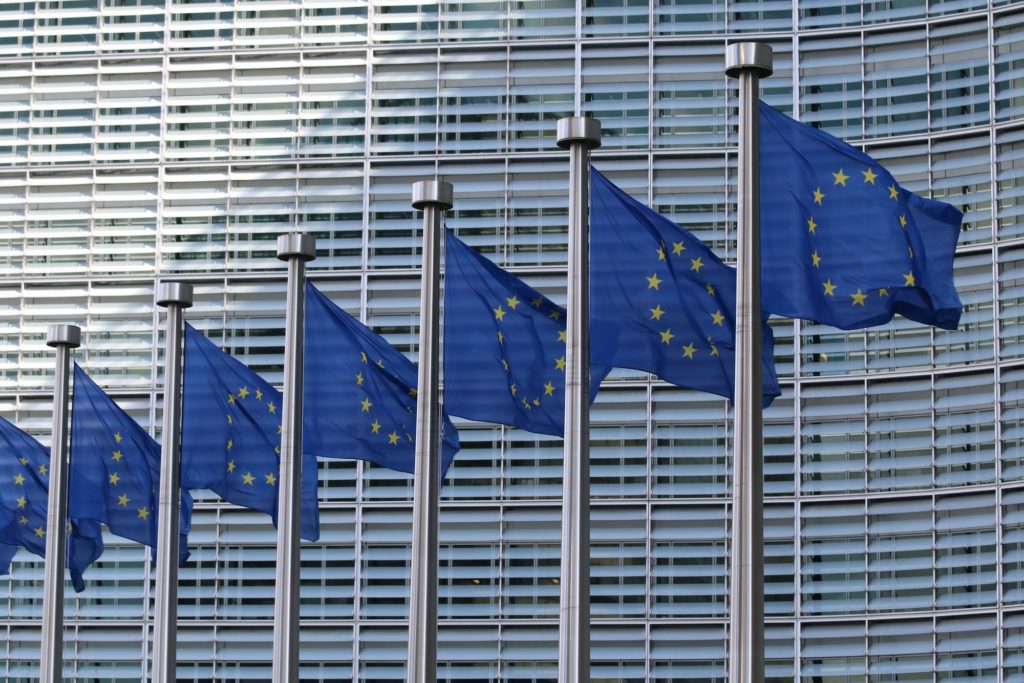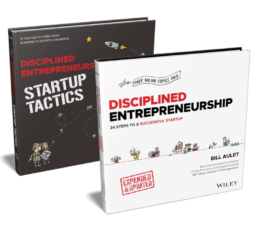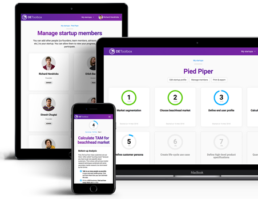The Disciplined Entrepreneurship Toolbox
Stay ahead by using the 24 steps together with your team, mentors, and investors.
Sign up for our newsletter
We know there is no shortage of reasons to apply the Disciplined Entrepreneurship (DE) framework for various innovation-driven processes both for established or under-development organizations or to fit the needs of the ready to go, exploratory and corporate entrepreneurs.
While there is a growing body of evidence regarding the value of DE and its impact, little is known about its potential application as an industry policymaking framework and an engagement strategy that can inform strategic policymaking dialogues.

Photo by Guillaume Périgois on Unsplash).
As an external expert on innovation at the European Commission (EC), my role involves working closely with EC project managers and innovation experts across Europe in programs designed to bridge the gap between research, innovation, and market and support the scale-up of the first application of several types of innovation projects.
Recently and in the context of the renewed European Industrial Policy Strategy adopted in 2017, I was invited to be part of EC’s strategic dialogue series aiming to identify policy needs and underpin a comprehensive framework feeding into future policy work on Cultural and Creative Industries (CCIs) and the broader vision for the industry of tomorrow.
It is through this occasion that I have experienced first-hand the processes of industry policy design. Right from the start, I decided to base my contribution more on methods and research into how organizations create value and sustain growth than my personal experiences and idiosyncratic view of the world. Undoubtedly, to be useful in a policy-focused strategic dialogue, one needs to combine domain practical expertise with evidence-based strategic thinking.
“To be useful in a policy-focused strategic dialogue, one needs to combine domain practical expertise with evidence-based strategic thinking.”
Why the end-to-end design of DE can become a fundamental concept for industrial policy strategy
For history, the never-ending knowledge quest that would help me navigate businesses in permanent “white water”, almost accidentally led me to the concept of Disciplined Entrepreneurship (DE).
Initially, the idea that entrepreneurship can be taught in a rigorous, systematic, and academically grounded way came as a positive shock to me when a friend introduced me to DE, during an Executive Education class at MIT Sloan, back in 2014.
Less than a year later, I was attending Prof. Bill Aulet’s Teacher’s class on Disciplined Entrepreneurship aimed at entrepreneurship and innovation educators. Little did I know that this class alone would serve as a perspective-adjustment mindset that glued together previously isolated blocks of knowledge and bits of information and would be so influential that saw DE as the foundation of my domain expertise in the field of corporate innovation ever since.
What I found most surprising is that the answer to many of my questions did not come from traditional business management theory or the countless industry reports but the emerging domain of entrepreneurship.
In general, policies typically aim to produce a variety of positive outcomes such as improve competitiveness and access to markets, promote and support the values of diversity and inclusion, foster economic and social prosperity and technological advancement among others. It is, in essence, an evolving feedback loop and iterative process of combining knowledge accumulated from past policies, industry data, and stakeholder insights and translating these inputs into evidence-based, actionable, and evaluable policies for the future.
“Policy design is, in essence, an evolving feedback loop and iterative process of combining knowledge accumulated from past policies, industry data, and stakeholder insights and translating these inputs into evidence-based, actionable and evaluable policies for the future.”
A principal characteristic of DE is that market intelligence, and business operations run conjointly throughout the process and reside at both ends of the spectrum (client-side and business-side). Therefore, the DE framework acts as a link between the two and powers the spiraling innovation iterative process.
As such, many key DE concepts can facilitate an effective industrial policy design. A thorough understanding of things like Beachhead Markets, Quantified Value Propositions, Full Life Cycle Use Cases, Decision-making Units and Processes, Minimum Viable Business Products, and Product-market fit, to name a few, can improve the chances of policy success, even if they do not assure it.
To inspire effective policy design, it is imperative to have an end-to-end understanding of value creation, capture and delivery, and a common language to facilitate efficient strategic dialogues. DE provides that framework and common language.
How can DE facilitate the process of evidence-based policymaking?
Process and evidence-based policymaking is a growing global trend that is marked by a shift in focus from inputs to impact outcomes and used to guide policy decisions and design, determine areas of focus and budget allocations and influence future initiatives.
The use of the DE framework as a general guide for my contribution provided me with a core set of tools and mindset to improve the quality of my input at various stages of the strategic dialogue and most importantly to focus on the potential policy deployment and impact on the ground.
DE as a tested and proven mixed-method approach to product development and corporate venturing is increasingly serving as a foundation for more significant innovation, accountability, and learning and also found it to be in line with the context in which policymakers are demanding results and accountability from public programs.
“I found DE to be in line with the context in which policymakers are demanding results and accountability from public programs.”
I also realized that industry policymaking inspired by the DE framework could potentially be used to test interventions in program design level, delivery, and impact evaluations, to build knowledge about the effectiveness of government-funded innovation programs, and inform future required policy iterations.
Put merely; DE may facilitate effective industry policymaking by providing clarity of thought, transparency, accountability, innovation policy deployment traceability, and to help identify the causal relationship between the program or policy and the outcomes of interest.
In this sense, DE-inspired industrial policy design may generate consequential convincing and comprehensive frameworks that can be used to inform policy design and improve program operations. Besides, DE could potentially form a well-informed idea of the “counterfactual” that is in this case, the thoroughness of a policy against the absence of the DE-based or inspired elements.
What does DE mean for policy design? Suggestions for future research
As policymakers become increasingly focused on a better understanding of how to improve implementation and achieve value for money, proven approaches that balance processes, conditions, organizational relationships, and stakeholder views with causality are rapidly gaining ground.
Industry policymaking is undeniably a very complex undertaking. While research on the effects of DE in industry policymaking is yet to be conducted it is argued here that future research may be designed to assess the plausibility of the hypothesis that DE can facilitate effective policy design in several key areas, including:
- Clarify policy elements and the context in which these are formed.
- DE can facilitate the formulation of concrete and relevant policy questions—grounded in a theory of change—that can be answered with an impact evaluation.
- DE accelerates the policymaking processes by providing a common language amongst participating stakeholders resulting in an increased strategic dialogue efficiency.
- DE can accommodate new capabilities and broader perspectives.
- DE can guide the design of data acquisition and categorization on program operations.
- Identify and describe the parameters that may affect implementation and industry policy outcomes.
- Risk mitigation measures. Developing unvalidated industry policy and interventions pose a risk that either the resources are misspent or that needed adjustments in policy design are introduced at a later stage. The DE framework may better inform both stages of policy design.
- DE allows policy design early in the policy cycle, ideally as part of the program design and before policy implementation.
- DE advocates and is based on the collection of high-quality data that provide the appropriate information required for future impact evaluations.
- Once impact evaluation results are available, DE may be adjusted as a Cost-Benefit and Cost-Effectiveness analysis framework as it covers all stages of the ideation, creation, commercialization and diffusion of innovations.
- Provides a better practical understanding to participating stakeholders regarding the processes of creation, commercialization and diffusion of innovations.
- DE’s dedication to teamwork and or to open science principles facilitates transparency throughout the policymaking process.
- Due to its completeness and end-to-end design, the DE framework can aid policymakers to identify what’s missing from the dialogue almost instantly.
- DE could serve as an engagement strategy to inform policy dialogue, guide impact evaluation reports and policy briefs disseminated to critical audiences.
The future of DE as a framework that can inform industrial policy design
All in all, it is argued that DE, coupled with monitoring and other forms of evaluation, may enhance the effectiveness of policymaking processes. It may also contribute to improved accountability for program managers, governments, and funders; and inform decisions about how to allocate limited resources more efficiently. Overall it is argued that DE is a framework that could contribute to the global store of knowledge about what works and what does not in the field of industrial policymaking.
As the processes of policymaking by design aim to ensure that industry strategy recommendations are resilient, inclusive, forward-looking, transparent, and impactful, now more than ever, governments must embrace ambitious benchmarks and battle-tested frameworks that advance the integration of robust and research-based management tools into core industry policymaking.
The author
Fotis Filippopoulos, PhD
Dr Fotis Filippopoulos is a corporate innovation specialist, an advisor at the European Commission, an IHU Visiting Professor, and an MIT-Certified IDE Entrepreneurship educator. In 2017, he was awarded the Mark of Excellence for Best Provision of Industry Information and Intelligence at the European Association Awards.

The books
This methodology with 24 steps and 15 tactics was created at MIT to help you translate your technology or idea into innovative new products. The books were designed for first-time and repeat entrepreneurs so that they can build great ventures.

How relevant was this article to you?
Click on a star to rate it!
Average rating 4.8 / 5. Vote count: 21
No votes so far! Be the first to rate this post.
We are sorry that this article was not useful for you!
Let us improve this post!
Tell us how we can improve this post?
